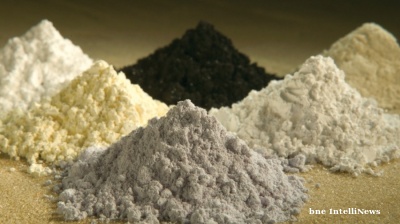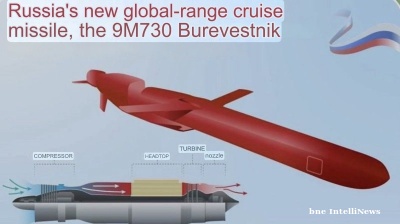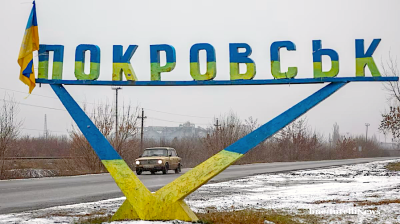Last summer President Vladimir Putin complained that the ruble exchange rate was too strong when it was trading at 62.8 against the US dollar. In March Finance Minister Anton Siluanov said he believed the ruble was 12% overvalued; it traded at 57.4 against the dollar that day, implying the finance minister considers 64 as fair value.
Also in March, the Central Bank (CBR) moved from a previous very hawkish position to cut its key rate by a modest, but still meaningful in policy terms, 25 basis points. The price of oil also fell by 5%.
All of this should have suggested a perfect storm against the ruble and it should now be trading above 60 against the dollar. But on April 4 the exchange rate was slightly up at 56.5 and looking unsure of which direction to move next.
So, what’s gone wrong? Why is the ruble defying the wish of the president, his senior ministers and the oil price and what should we expect from here?
It seems clear that the ruble will continue to trade at well off the 60 mark (against the dollar) over the short to medium term. Yet despite previous comments in support of a weaker exchange rate, this may also suit the government. While the weak ruble is considered critical for economic competitiveness, it is a fact that companies are struggling to pay for imported equipment and technology. A period of ruble strength will open a window for more competitive imports.
But, like many things in Russia, policy and preferences are often made on the hoof; what is dogma today often becomes more flexible tomorrow. On the one hand it is good that the government is sensitive and reactive to the real economy; on the other hand it drives economists and forecasters crazy.
For the record, at Macro-Advisory we are keeping our year-end target ruble-dollar exchange rate at 62.0, based on an average oil price of $54 per barrel (p/bbl) and no change in sanctions. But the exchange rate will be more volatile than expected and we will be paying close attention to any indication of a more permanent shift in the government’s view of what is the optimal exchange rate.
As mentioned, in July 2016 Putin expressed concern that the ruble was “too strong” in a public meeting with Prime Minister Dmitry Medvedev. The exchange rate the day before was at 62.85 and ended that month at 66.98. Since then the ruble has appreciated by almost 20%.
The culprit for defying the president’s wishes back then was the oil price; it rallied 25% between mid-July and year-end, albeit almost all of that came as a quick reaction to the surprising Opec agreement to cut production. The credibility of that deal was enhanced, if not actually established, with the strong political support for the deal from Russia. So, to a large extent, the Kremlin only has itself to blame for the ruble running away from the president’s clearly stated preference.
But while historically we could justifiably blame the oil price for the direction of the ruble exchange rate, that is not the case today, and it has not been through the past quarter. The price of oil fell 5% in March, while the ruble gained 3.5% against the dollar. Since the start of the year the ruble is up 9% while oil is down almost 6%. It means we have to look elsewhere for the explanation for the ruble’s rally and, from that, to ask whether we now need to reassess the factors we use to predict the future path of the exchange rate.
Localisation key
One of the reasons why economists have been so convinced that the ruble should trade at no higher than 60 against the dollar is because this is the approximate level the president and government ministers have indicated as being key, if not actually critical, for so-called localisation to work.
Localisation is the strategy identified by government as offering the best option to rebuild, and sustain, economic growth near the targeted 4%. The objective is to attract investment into industries such as manufacturing and agriculture, which will lead to diversification in the domestic economy and, critically, exports, away from the current dominance of hydrocarbons and other extractive industries. The key to localisation is the ability to attract investment into these industries and the key to that is maintaining competitive economic conditions, of which the weak ruble is at the very core.
Many industries have been complaining that the weak ruble makes it too expensive to import equipment and services to build the factories demanded by the government’s localisation strategy. As a result, the process has been moving far too slowly. This period of ruble strength will allow many to lock in better import price terms.
A recent poll by the Institute of Economic Policy showed that a majority of companies which need to buy equipment to expand both domestic and export sales would be satisfied with a ruble-dollar rate at 54.0 as a compromise between export competiveness and the need to buy equipment. A broader survey, i.e. not only those who need to import equipment, carried out by the Ministry of Trade and Industry showed that 30% of respondents would be happy with a rate between 60 and 64; 17% would prefer a range of 65 to 69; and 15% would be happy to see the rate between 70 and 74. Only 20% expressed a preference for a rate between 50 and 56 against the dollar.
Earlier I mentioned that there were a number of factors that should have combined in March to weaken the ruble but the opposite effect materialised. Partly this was because there was the upgrade in international rating agency S&P’s outlook for Russian risk to positive. That is the step usually made just ahead of an upgrade in the actual rating which would see a return of the investment grade rating lost in 2014. Moody’s made the same move in February. This came against a backdrop of improving macro indicators, even if only at a headline level. The economy has finally ended an eight-quarter recession. Investment grade would allow a much broader range of international investors to again buy Russian assets such as debt and equities.
March is also one of the main tax payment months of the year so Russian companies have to accumulate rubles to pay their taxes. For export earners that means selling foreign currency and boosting demand for the ruble. Currency speculators are never going to ignore that tempting combination and ignoring weaker oil and the political statements, they have been piling into a tempting carry trade. It means buying rubles and taking advantage of the much higher interest rates available on ruble deposits and debt than is available in, for example, US dollar or euro instruments. In late March an average of $5bn was converted every day into rubles on international bourses for this reason.
The question now is whether the president and his ministers have changed their view as to what should be the fair value of the ruble-dollar exchange rate or if they still see 60 or weaker as optimal. If the latter, what can be done to dissuade speculators to exit?
The CBR could accelerate future rate cuts but it seems disinclined to do that because of inflation concerns. Still, if the ruble is still strong at the time of the next policy meeting then a 50 basis point cut is certainly possible. The finance ministry also plans to siphon off surplus oil tax revenue (all revenue earned above $40 p/bbl) into the Reserve Fund and that will add some pressure to the ruble, albeit it will be something akin to a finger into the proverbial dyke if speculators are still converting $5bn per day.
In reality there is no quick fix and, despite the political preferences, it appears there is no firm strategy either. If the ruble does move back above 60 against the dollar later in this quarter, as is the consensus view, it will be because of a combination of factors rather than as a result of one action from government. But what is at stake is clear: if the ruble strengthens too far then the economic recovery – which has been driven by such sectors as agriculture which have specifically benefited from the weak currency – may stall; if, on the other hand, the ruble weakens again too quickly, then the very manufacturers upon which localisation and future growth relies will not be able to justify investment.
Chris Weafer is a founding partner of Macro-Advisory, which helps investors cut though the noise & focus on underlying trends, real political risks, & opportunities in Russia/CIS, Eurasia Union, & Mongolia. Follow him on @ChrisWeafer.
Opinion
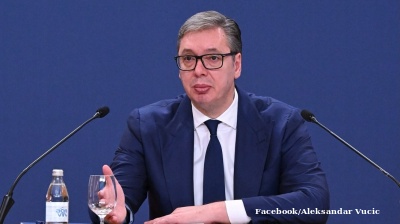
A year after the Novi Sad disaster, Belgrade faces one crisis after another
Serbia’s government is grappling with a convergence of crises which threaten to erode President Aleksandar Vucic’s once-dominant position.
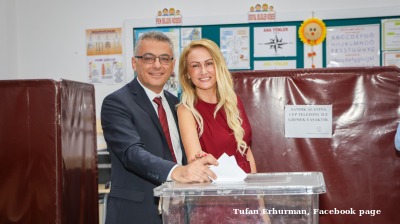
Don’t be fooled, Northern Cyprus’ new president is no opponent of Erdogan, says academic
Turkey’s powers-that-be said to have anticipated that Tufan Erhurman will pose no major threat.

COMMENT: Hungary’s investment slump shows signs of bottoming, but EU tensions still cast a long shadow
Hungary’s economy has fallen behind its Central European peers in recent years, and the root of this underperformance lies in a sharp and protracted collapse in investment. But a possible change of government next year could change things.

IMF: Global economic outlook shows modest change amid policy shifts and complex forces
Dialing down uncertainty, reducing vulnerabilities, and investing in innovation can help deliver durable economic gains.
